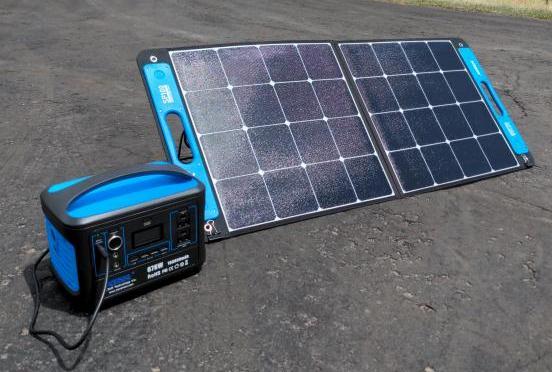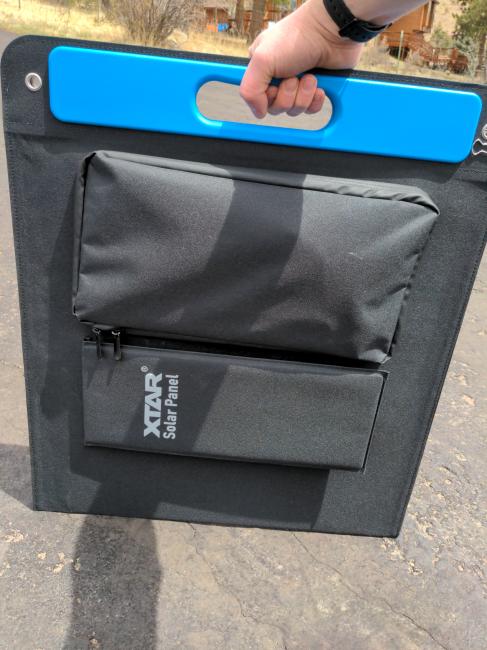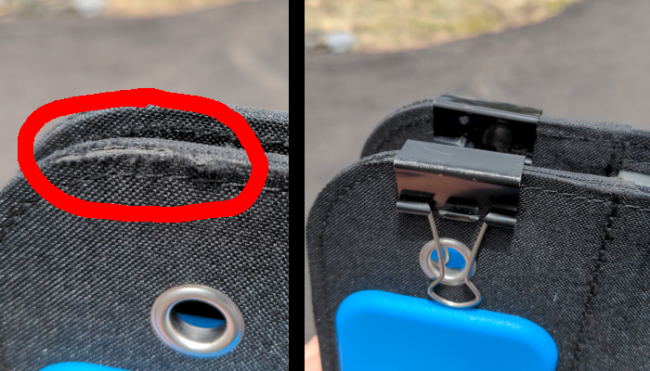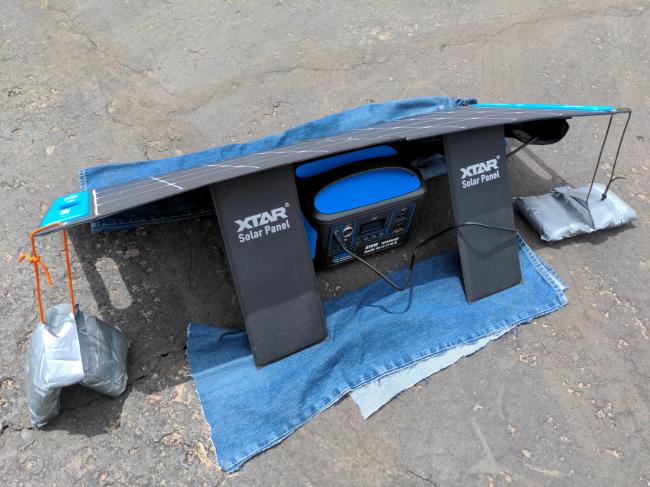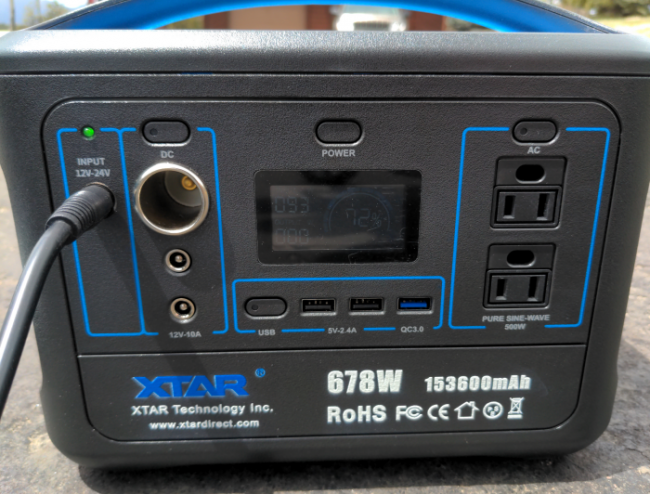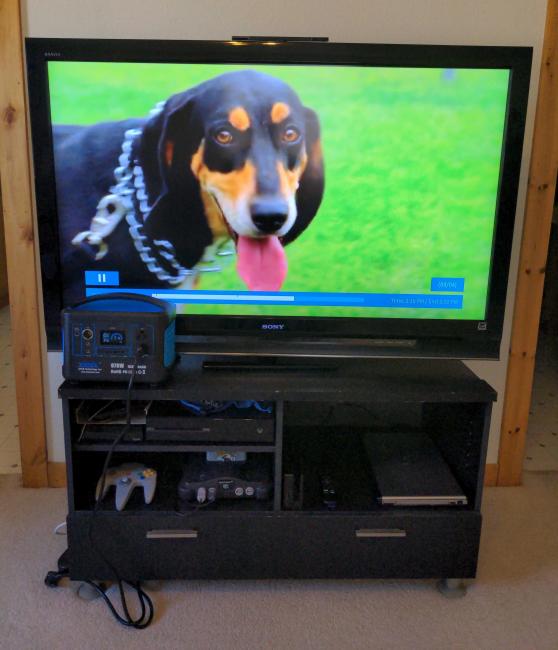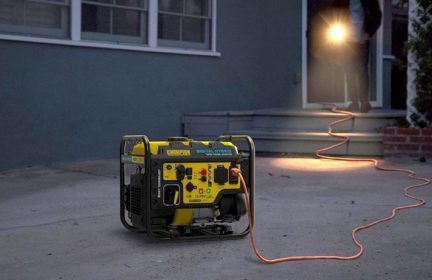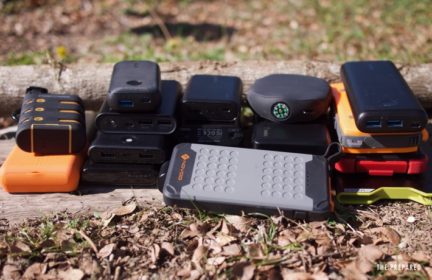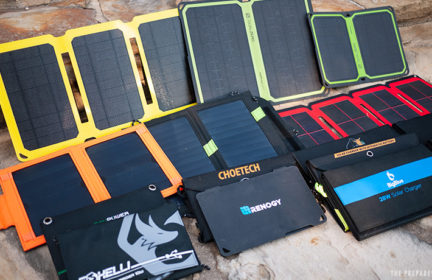Review: Xtar 100W semi-portable solar panels and 678W battery pack
The Prepared was sent over a sample power station and solar panel by the company Xtar Direct. After a few weeks of testing I have to say that it is a pretty good off-grid power solution for medium draw devices.
The solar panel
The 100W solar panel surprised me with its build quality and efficiency. In direct sunlight it produced a steady 110 watts and even when it was overcast and cloudy it could still ink out 20-25 watts. The panel is slightly flexible, is able to fold in half during transport, and is held together using strong magnets. It features a pouch on the back that houses the generous 10 foot cable with extra room to spare. The cable has a DC7909 (8mm) port, so you will need an adapter if your power station doesn’t use this type of connector. Two adjustable kickstands are attached to maximize the output from the sun.
One of the downsides of having a lightweight panel is that it is easily blown in the wind. After two days of use, I noted that the wind was scooting it forward against the asphalt and was starting to wear down the points of contact. To protect it from wearing down further, I placed some binder clips where it comes in contact with the ground. I would have liked to have the edges dipped in rubber to be more durable and prevent sliding.
To prevent the panel from blowing away, tipping over, or sliding and wearing against the ground, I took various measures to keep it stable. I laid out an old pair of jeans along the front edge of the panel to protect it from the asphalt. A smaller piece of denim was placed on the back kickstands as those are just made of fabric as well. I made two sand bags and tied the top edges to it with some scrap paracord. The sandbags prevent the panel from blowing forwards, and the power station nestled under the panel keeps it from blowing backwards. Another benefit to placing the power station under the panel when charging is that it keeps it cooler in the shade of the panel to prevent the batteries from overheating, and shelters it from any rain that might come down.
Overall, I am very happy with this panel. I love how lightweight it is, easy to transport, the magnets holding it closed are nice, and it pumps out more electricity than advertised. My one recommendation to Xtar is to dip the edges in rubber to prevent slipping and wear.
The power station
This is a well built power station that will hold up to moderate use. I liked the very thick and grippy rubber bumpers on the bottom, easy to grab handle, and 11 pound lightweight build. It packs in 568Wh of lithium ion batteries that will retain 80% of their original charge after 800 discharge cycles. There is a 500W pure sine wave inverter which can handle a 1000W surge load. Packed with two full sized AC wall outlets, three USB-A ports, a DC cigarette lighter port, and two additional DC outlet ports you don’t need much more than this.
The user manual was poorly translated and led to some confusion. And maybe it is just me, but I could not figure out what the giant ‘678W’ stood for on the front of the unit. It didn’t mention this number in the manual or on their website, so I had to contact their customer service team to find out and they said that the 678W is the output of all the ports combined. 678w= AC(500W)+ DC(140W)+ USB(10W+10W+18W).
When testing the USB ports, I was only ever able to pull 6W out of any of them. When all three USB ports were loaded I was drawing 26W. I don’t have a USB multimeter, and was just going off the display of the unit of what it says it was drawing.
The display tells all the info you need such as how many watts are coming into the unit when charging, how many are going out during use, the remaining percentage of battery capacity, and which outlets are being powered. The display is great indoors, but difficult to read outside in the bright sun.
For many days I put this unit through some real world tests and it handled things excellently! I ran a giant old TV and video game console, Dremel rotary tool, lamp, computer, and monitor. Not all at once, but one or two together at the same time and it all worked well.
When running my desk setup off of it (laptop, monitor, speakers, mouse, keyboard, USB hub) I was able to start with 98% at 10am and run till 6:40pm and still have 37% left over. This desk setup only drew between 40-50W, so not too draining. I did run into a weird quirk however when powering my work desk devices. If I was powering everything at the same time, just the monitor, or even just the laptop I would experience constant turning off and on randomly with my keyboard and mouse in the USB hub. So weird that the power station would influence that even if it was just my monitor being powered by it and the monitor is only connected to my laptop through an HDMI cable.
The included 100W wall charging brick comes in a nice pouch and works flawlessly, but I did run into an issue when charging the power station with the solar panel. I would set everything up and leave it out to charge in the sun only to find out later that it wasn’t charging. Xtar had a very responsive and personalized customer support team, so A+ for that, and they informed me that there was a charge procedure issue with the power station and that I would not run into this issue if I depleted the unit below 40% and started charging from there. So I drained the unit to 5%, plugged it in and it charged the entire day without issue. But whenever I start the solar panel charging at say 55%, it will only charge like 6% and then stop. If I unplugged the charging cable, waited 30 seconds, and then plugged it back in, it would start charging at the full 110W again for a couple more minutes.
Unfortunately, this power station seems to be a Chinese white label product from what I’ve seen. That means that a company in China makes a ton of these with no branding, sells them to various companies who just put their sticker on them and say that it is their product. This model can be bought in bulk on Alibaba.com for $252, then one sticker later they turn around and sell it for $370.
How does it compare to other power stations?
At $370 for the power station, $270 for the solar panel, or $600 for the combination when bought using that link for the power station, this is a very economical way to get into powering medium sized devices.
Quick comparison to more “name brand” power stations:
Xtar power station – $370 – 568Wh battery capacity – 2 AC ports
Jackery explorer 500 – $500 – 518Wh battery capacity – 1 AC port
Goal Zero Yeti 500X – $700 – 505Wh battery capacity – 2 AC ports
Summary
With the issue of the unit charging for only a few minutes while powered by a solar panel, it is a major irritation to constantly be sitting by it and unplugging and plugging it back in. But if you are just going to buy the power station and use the AC charger, then I highly recommend the Xtar power station as a cheap source of emergency power or as a unit you could bring camping.
-
Comments (1)
-
